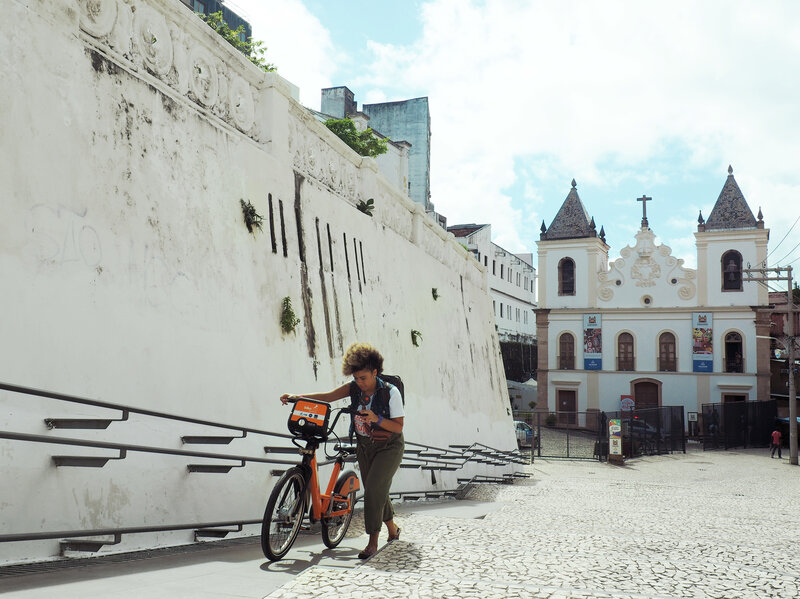RIO DE JANEIRO, BRAZIL – A legion of customers who withstood the pandemic made life difficult for the largest banks in the country. Bradesco and Santander joined the journey of individuals and families who did not give up and decided to go into battle to secure small businesses and homeownership.
Real estate credit and financing for small pickup trucks, motorcycles, solar energy equipment, and agribusinesses have skyrocketed.

The opening and closing of the economy, imposed by social distancing in the periods of recrudescence of Covid-19 last year and this, provoked a change in habits. Nonetheless, they did not inhibit the journeys of Brazilians through virtual shop windows. Nor did they ignore facilities for obtaining credit, in some cases, like real estate, contracted at historically low-interest rates.
In the 12 months through May this year, all the credit lines dedicated to individuals grew. Initially, the operations were driven by credit cards, which, for cash payments, jumped 40.6%, to a total of R$228 (US43.5) billion.
Real estate credit reached R$749.8 billion in nominal value, an expansion of 13.6% also in 12 months. Vehicle financing increased 10.9% to R$226.7 billion, while financing for the purchase of other assets soared 40.7% to a still modest R$17 billion. The smallest of the bunch, microcredit, was increased by 26.1% to R$8.5 billion and got many people out of their misery.
“The first semester ended very strong in the consumer lines, and the second semester is going in the same direction. The pandemic made everyone reinvent themselves in business as well. We became closer to the clients, and digitalization – already underway, but to be implemented within ten years – was brought to present value”, reports Leandro Diniz, director of the Bradesco Loans and Financing Department to EXAME IN.
The department, which had a cast of 400 to 500 employees at the beginning of the pandemic, today has 1,000. “Half take care of the day-to-day demands, and half of the employees are dedicated to the digital transformation processes.”
Diniz says that the change in customer behavior has not and is not going unnoticed. Client interest has migrated from services to durable goods.
“We had a historic June in some credit segments. Consigned credit is also growing strongly. We are now moving on to financing the harvest. The entire agribusiness chain maintained the demand for credit, as did the real estate sector. As the largest manager of real estate financing in the country, we have not registered any work stoppage since the beginning of the pandemic. A total of 840 construction sites nationwide. And last year, we doubled microcredit. The goal is to double again in 2021”.
The director of Bradesco evaluates that the revisions to the economy’s growth this year and next year help maintain the positive environment for business. He points out that the economy and the use of technology becoming stronger, especially with the intensive use of cell phones, contribute to a favorable dynamic and the agility of operations.
Diniz says that Bradesco has been using algorithms in credit analysis for two years. And recalls that the institution was the first to make credit available on the PIX instant payment system. “And with operations approved in six seconds,” he celebrates.
SOLAR ENERGY SUCCESS
For its part, Santander has built partnerships with retailers to meet the demand for credit promptly. “Today, we have 16,000 goods and services partners all over Brazil, including health equipment suppliers, furniture stores, among others. This way, we can attend clients, whether or not they are account holders of the bank, financing their purchases in these stores in up to 24 installments”, says Cassio Schmitt, director of the bank’s credit products – the third largest private bank in the country.
In an interview with EXAME IN, the executive considers that there is still a huge space to grow in physical stores, which is why Santander has expanded its commercial team. “With the advance of vaccination, we believe in a stronger resumption of economic activity and an increase in purchases in stores. In addition, in 2022, we will accelerate the integration of our financing solutions to e-commerce.”
Santander has been growing prominently in agribusiness and real estate, it also has partnerships with solar energy suppliers for residential purposes – a segment that registers firm demand for financing equipment that greatly reduces the cost of the electricity bill.
“Financing for the purchase of real estate and renovations has been very relevant in pulling the entire chain of products in the sector, such as construction materials and furniture,” says Schmitt.
According to the customers’ stage of life, the Santander executive believes that the right credit line can support the realization of their projects and the construction of dreams. When asked about borrowers’ income commitment level, Schmitt evaluates that “something around 30% may be adequate, as long as the borrowers can manage their financial lives properly.”
The Santander executive says it is important to note that considering real estate credit – a longer-term operation – the ratio of indebtedness of Brazilians over their net income is still low compared to the indebtedness of families in other countries
Source: exame

